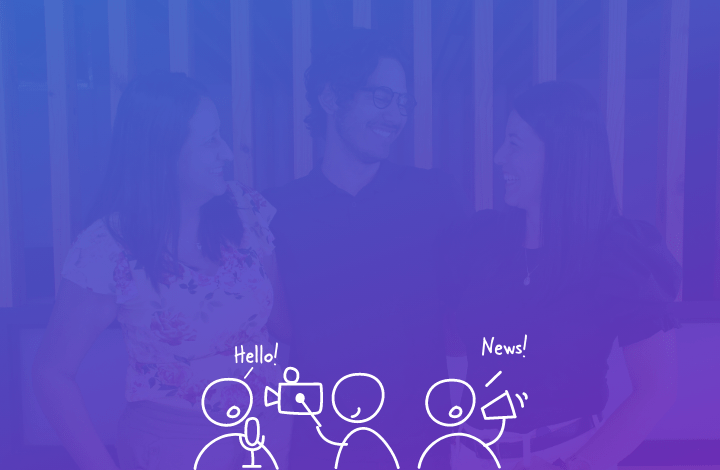May 9, 2024

Software Development Outsourcing
Hire in Staffing Model: A Strategic Guide to Building Your Dream Team in 2024
The modern business landscape thrives on agility and adaptation. In today’s dynamic market, building a successful team requires a strategic approach to talent acquisition. Enter the Hire Staffing Model, a flexible and cost-effective solution that empowers businesses of all sizes to access a wider talent pool and build a workforce tailored to their specific needs.
This comprehensive guide delves into the intricacies of the Hire Staffing Model, exploring its core components, benefits, and various implementations. By the end, you’ll be equipped to assess your unique hiring needs and leverage the Hire Staffing Model to build a dream team that propels your business forward.
The Rise of the Hire Staffing Model: Stats and Trends
The traditional full-time employee model remains a cornerstone of workforce management. However, a growing number of businesses are embracing alternative staffing models to address evolving needs. According to a 2023 study by the Society for Human Resource Management (SHRM), 72% of organizations reported utilizing temporary or contract workers in the past year. This trend signifies a growing recognition of the Hire Staffing Model’s advantages.
Here are some key statistics highlighting the rise of the Hire Staffing Model:
- Increased Demand for Flexibility: A 2022 study by Upwork revealed that 59% of the global workforce now freelances in some capacity. This shift towards independent work underscores businesses’ need for flexible staffing solutions.
- Skill Shortage Concerns: A 2023 report by McKinsey & Company estimates a global talent shortage of up to 85 million workers by 2030. The Hire Staffing Model allows companies to tap into a wider talent pool, mitigating skill gaps.
- Cost-Effectiveness: A 2022 study by the National Bureau of Economic Research found that businesses utilizing temporary staff reduced labor costs by an average of 15%. The Hire Staffing Model can lead to significant cost savings.
These statistics paint a clear picture: the Hire Staffing Model is becoming increasingly popular, driven by the need for flexibility, talent acquisition, and cost optimization.
Core Elements of the Hire Staffing Model: A Framework for Success
The Hire Staffing Model isn’t a one-size-fits-all solution. It provides a framework for leveraging different staffing strategies to achieve your company’s specific goals. Let’s explore the key elements that build a robust Hire Staffing Model:
Needs Assessment
The foundation of any successful Hire Staffing Model lies in a thorough needs assessment. This involves analyzing your current workforce, identifying upcoming skill gaps, and projecting future staffing requirements. Consider factors like budget, project timelines, and the nature of the work required.
Strategic Sourcing
Once you understand your needs, you can develop strategic sourcing strategies. The Hire Staffing Model empowers you to explore various avenues for talent acquisition, including:
- Internal Recruitment: Utilize your existing employee network through referrals and job postings on internal platforms.
- Staffing Agencies: Partner with reputable staffing agencies specializing in your industry to access a broader talent pool.
- Freelance Marketplaces: Platforms like Upwork and Fiverr offer access to a vast network of independent workers with specialized skills.
- Educational Institutions: Partner with universities and colleges to connect with recent graduates and interns possessing fresh perspectives and relevant skills.
- Candidate Screening and Selection: The Hire Staffing Model emphasizes a robust screening and selection process, regardless of the sourcing strategy employed. Implement clear selection criteria based on qualifications, experience, and cultural fit. Utilize assessments, interviews, and reference checks to identify the best candidates for your needs.
- Onboarding and Training: The onboarding process plays a crucial role in integrating new team members, regardless of whether they are full-time, temporary, or contractual. Develop a comprehensive onboarding program tailored to the specific role and the Hire Staffing Model variant being used.
- Performance Management: Regular performance management is essential for any team, including those built using the Hire Staffing Model. Establish clear performance expectations and metrics to track progress and provide ongoing feedback to team members.
- Flexibility and Adaptation: The hallmark of the Hire Staffing Model is its flexibility. The ability to scale your workforce up or down based on project demands is a significant advantage. Regularly assess your needs and adjust your staffing strategy accordingly.
By focusing on these core elements, businesses can construct a Hire Staffing Model that fosters a dynamic and high-performing team.

Choosing the Right Fit
There are a variety of options to cater to your specific requirements. Here are some common implementations to consider:
- Contract Staffing: Engage skilled professionals for a predetermined period, often with the possibility of extension based on performance. This approach is well-suited for ongoing projects with defined timelines.
- Temp-to-Hire Staffing: Utilize temporary staffing to assess a candidate’s fit for a potential permanent role. This allows you to “try before you buy” and build confidence in your hiring decision.
- Direct Placement: Staffing agencies can assist in the search and placement of permanent employees who align perfectly with your needs. This is ideal when seeking long-term talent but lacking the resources for extensive internal recruitment.
- Freelancers and Independent Contractors: Leverage online platforms or your network to engage specialized freelance talent for specific projects or ongoing needs. This option provides access to a diverse skill set without incurring full-time employee benefits.
- Part-Time Employees: Hire qualified individuals for a portion of the regular workweek to fill specific needs or address workload fluctuations. This allows you to optimize resource allocation while offering work-life balance for your employees.
The best implementation for your business depends on various factors. Analyze your needs and consider the following questions:
- Project Duration: How long will the specific task or need last?
- Skill Requirements: What specialized skills are necessary for the role?
- Budget Constraints: What financial resources are available for staffing purposes?
- Workload Fluctuations: Do you experience seasonal or cyclical variations in your workload?
By addressing these questions and aligning them with the various Hire Staffing Model implementations, you can make informed decisions about building a flexible and efficient workforce.
Benefits: A Strategic Advantage
This offers numerous advantages for businesses of all sizes. Here’s a closer look at some key benefits:
- Cost-Effectiveness: Reduced costs associated with employee benefits, recruitment, and payroll taxes.
- Increased Talent Pool: Access to a wider range of specialized skills and expertise.
- Flexibility and Scalability: The ability to adapt your workforce to meet fluctuating needs.
- Faster Time-to-Fill: Staffing agencies can streamline the recruitment process, filling open positions quickly.
- Reduced Risks: Temporary and contractual staffing offers flexibility in case of a poor fit.
- Improved Efficiency: Focuses on utilizing the right talent for the right tasks at the right time.
- Enhanced Innovation: Access to diverse perspectives and fresh ideas from temporary or contract workers.
By leveraging the Staffing Model, you can unlock strategic advantages over competitors who rely solely on traditional full-time employee models. It empowers you to build a dynamic and highly responsive workforce tailored to meet the demands of the ever-evolving business landscape.
Conclusion
The Hire Staffing Model isn’t a magic solution. Its success hinges on a clear understanding of your needs, strategic planning, and a commitment to building a positive work environment for all team members, regardless of their employment status.
Here’s how to take action:
- Conduct a thorough needs assessment to define your specific hiring requirements.
- Explore various Hire Staffing Model implementations to find the best fit for your needs.
- Partner with reputable staffing agencies specializing in your industry for talent acquisition.
- Develop a robust screening and selection process to ensure you identify the best candidates.
- Implement a structured onboarding program to integrate new team members effectively.
- Establish a culture of continuous learning and feedback to optimize performance for all team members.
By strategically implementing the Hire Staffing Model, you can build a dream team that fosters innovation, drives efficiency, and propels your business forward in a dynamic and competitive marketplace. Remember, the ideal workforce is a flexible one, and the Hire Staffing Model equips you with the tools to achieve that flexibility while securing top talent.
Ready to take the next step? Book a meeting now with our team and learn more about how you can grow your team with our tailor-made talent.
Learn more about Nearshore Staff augmentation Latin America in 2024 here









